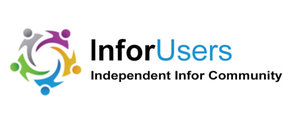Improving Healthcare Quality for Episodes of Virtual Care
As healthcare reimbursement moves toward a higher adoption of value-based care (VBC), the ability to effectively monitor and manage high-risk patients becomes a critical factor for organization viability. The fee for service (FFS) reimbursement model focuses on managing patients that optimize the care delivery environments of the provider. In most cases, patients must travel to primary care clinics or to specialty clinics to receive care in the FFS model. While this model may optimize the utilization capacity of the provider’s care facilities, it does little to facilitate care that accommodates the patients’ needs.
COVID-19 created a “woke” environment for all healthcare stakeholders for care delivery needs and innovative models. Telehealth became a key requirement for primary care physicians to not only render safe care but to support revenue streams. New models of care delivery are patient focused and determine care delivery services based on patient need. In some cases, telehealth will best support the patient encounter, homecare might be the best option if patients need human interventions, or patients may still be willing and able to receive care in the clinic. As we move forward with more patient-focused care based on high-risk patients in at-risk contracts, it will be important to integrate remote patient monitoring (RPM) into care delivery services. It will be important to use RPM solutions that are intuitive for patients to use and easy to integrate into care delivery data flows.
Wearable Technology – Evolving with a Wide Range of Clinical Monitoring
Over the last several months, wearable technology has evolved to monitor several clinical factors of the wearers. The Apple Watch and Fitbit monitor heart rate, irregular rhythms, and can provide an ECG reading to identify potential atrial fibrillations. If cardiologists prescribe these watches to their high-risk cardiology patients, how many readmissions will be avoided? How may ED visits will be avoided? An avoidance of either of these incidents can easily pay for the watch. The ability to capture consistent and timely patient readings for evaluation and assessment with other EHR data will improve the quality and safety of care. This data can also be combined in data analytics environments to monitor and/or create evidence-based medicine protocols. A wearable device will likely be more convenient and comfortable for the patient than using RPMs that must be worn on other parts of the body.
Other vital signs that can be monitored by wearables are blood pressure (Omron HealthGuide), and stress indicators (Fitbit Versa 3). Some of these wearables also have temperature and oxygen saturation sensors, which are key vital signs for monitoring COVID-19 infections.
Wearable technologies are advancing their ability to monitor, report, and track key patient vital signs. As these technologies continues to improve, we would also expect the cost of these solutions to decline. This scenario supports a defensible ROI of these devices to support healthcare delivery services to high-risk patients.
What is the Cost of a Readmission or ED Visit?
In 2016, the average cost of a hospital readmission across all principle diagnoses was $14,000, and the highest readmission rates were for patients on Medicare. As healthcare reimbursement continues to move to higher rates of VBC, organizations must adopt virtual care models with RPM technologies to provider more efficient, effective, and lower cost care to high-risk patients. Most wearable devices are around $300 to buy. The prevention of one readmission is equal to approximately 46 wearable devices. Continue the math for an organization based on their true readmission rates to establish the potential cost savings for high-risk patients for one disease state or many.
Big Tech Plus RPM-Focused Companies
Representative wearable solutions that are designed to be worn on the wrist are listed below. Other wearables that may be considered are those that include glasses and headsets.
At this time, the Apple Watch appears to be the most advanced solution, but Google/Fitbit and Samsung will continue to provide competitive pressure to drive advancement of these solutions.
Success Factors
- If possible, lease these devices to provide protection from technological obsolescence. This technology advances in months, not years.
- Select devices that will either transmit patient data to secure cloud databases for downloading to the EHR or that can connect to the EHR with cellular connections that support IoT devices.
- Monitor patient data received from wearable devices to analyze improvements to outcomes as well as healthcare cost reductions. Report the findings to executive management monthly.
Summary
COVID-19, VBC, and patient-focused care are driving healthcare provider organizations to create new virtual care delivery models. As VBC reimbursement will be driven by outcomes and patient satisfaction, it is crucial to create healthcare services that support the socio-economic and lifestyle needs of patients. This becomes more evident when high-risk patient populations are analyzed to determine the best modalities for delivering efficient, safe, high quality, and lower cost care to minimize contract risk exposure.
The ability to incorporate wearable RPM solutions to support telehealth, home care, and population/disease management will enable providers to have a timely picture of the patient’s healthcare status that facilitates better care management. The ability to capture consistent streams of patient vital sign data will also improve data analytics used to create and manage care protocols.
In the next two to three years, you may see the smart wearable devices interoperate with smart home devices for the collection, management, and evaluation of data. This will likely result in real-time patient guidance and alerts that will improve both patient care and patient satisfaction.
Photo Credit: Adobe Stock, Andrey Popov


